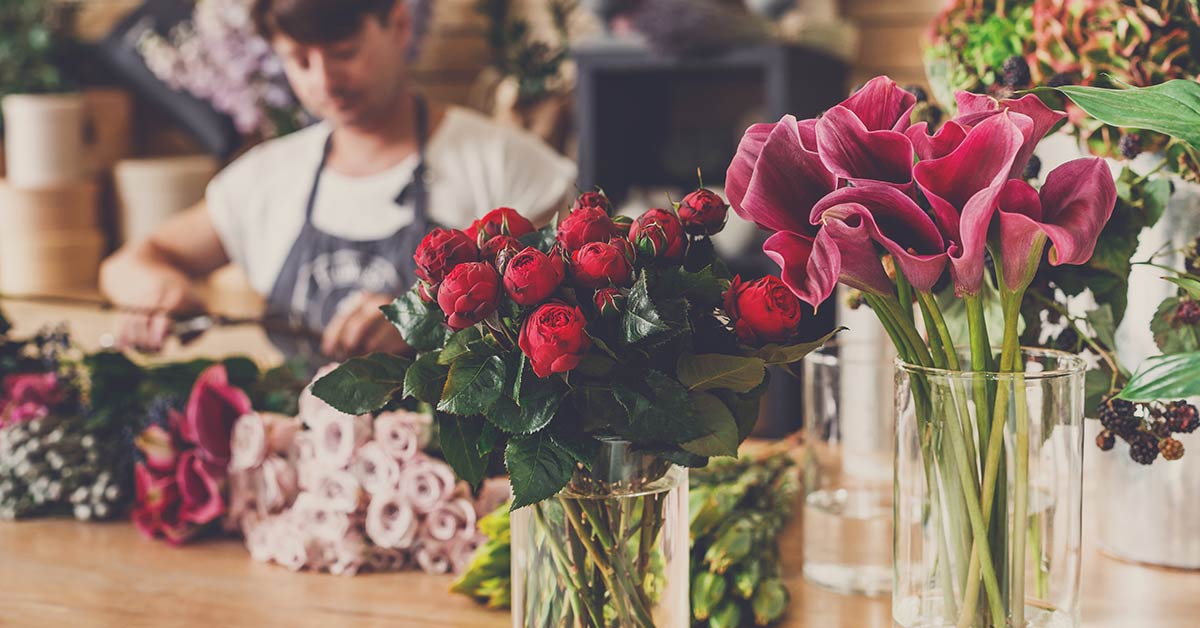
As a grower, wholesaler or retailer of flowers, you’ll want your cut flowers to look and smell as good as when they were first harvested, for as long as possible. The buds should be plump and hydrated, and the foliage robust, healthy and disease-free.
Handle and store cut flowers properly and they’ll also last longer after they’re sold – resulting in happy customers who return for more.
Here we provide an overview of the advantages of reefers as a cold storage option for flowers, as well as a round-up of other flower preservation tips shared by specialists in the field. Some of the tips are just as useful for prolonging the life of cut flowers at home.
Store at optimal temperature and humidity
Be sure to store your flowers in a chill room that has a humidifier and an adjustable temperature system. Most types of flowers last the longest when stored at approximately 1 degree Celsius.
Optimum relative humidity for most cut flowers is 90% to 95%.
Use a reefer for the freshest stored flowers
An affordable option for keeping flowers at the right temperature is a refrigerated shipping container, also called a reefer.
Advantages of reefers for cold storage of flowers are that:
- you can easily rent a reefer to meet temporary or seasonal flower storage needs; for example before Valentine’s Day, Mother’s Day and other holidays
- a reefer can be fully customised with a humidifier, shelving, partitions, light sources, ventilation and anything else that’s required
- with its steel lining, a reefer is easy to disinfect – an important consideration for protecting cut flowers from fungal infections like Botrytis cinerea (the bane of many a florist), as well as bacterial infections
- a reefer is portable, highly durable and tamper-proof, making it ideal for outdoor use even in harsh climates
- buying or renting a reefer makes it possible to add cold storage space to your premises immediately, without investing time and money in the construction of a fixed cold storage facility.
Loosen packaging and check the product
Flowers naturally open and expand as they mature, so it’s essential to remove or loosen any packaging before you store, arrange or display them. This doesn’t apply to roses, however, because most customers prefer rose buds.
Carefully check the product for yellow foliage, and damaged or wilted flowers. Remove them, and discard. Rotting, dead or diseased flowers and leaves release ethylene gas which, in turn, leads to flower and petal drop, and premature death.
Re-cut the stems
The majority of flowers that arrive at retailers have stems that are partly blocked by bacteria and minerals, and because of cutting tools that have squashed the xylem (tube in the stem that conducts water). This reduces the flowers’ ability to absorb water, leading to earlier deterioration.
To prolong the life of cut flowers, re-cut the stems at a slanted angle with a sharp knife. The angled cut boosts water absorption and prevents the stems from sealing to the bottom of the container.
Ideally, cut the stems under warm water. It contains less oxygen than cold water. That’s good because air can partially block stems, impeding water absorption.
Note that the tips of stems with milky sap should be blackened over a flame or immersed in boiling water for 20 or so seconds to seal the sap. This is so that water can be absorbed.
Only store dry blooms
Damp flowers are susceptible to fungal growth. In fact, Botrytis is the number 1 enemy of cut roses, gerberas and lisianthus.
It’s a fast-spreading grey mildew that, like other fungi, relies on moisture to germinate. Once your flowers are infected, they have to be thrown away.
A cardinal rule is to store only dry blooms that do not have the dark splotches characteristic of Botrytis infection.
Use the right preservatives
Adding a flower preservative to the water in the storage container has myriad benefits driven by the life support systems it contains:
- sugar – essential for the manufacture of food
- bactericide – reduces bacterial activity
- acidifier – lowers the water’s PH
- essential minerals – support longevity.
For the best results, stand the flowers in the preservation solution outdoors for approximately two hours, and then move them into the cooler. Roses are the exception – they must be stored in a cool environment from the get-go.
Be aware of pH
In storage water, a pH of between 3. 5 and 5. 0 is optimal for the preservation of cut flowers. The low pH slows the growth of microbes that hamper or block the plants’ ability to absorb water.
At Big Box Containers, we don’t specialise in flowers – but we do know our stuff when it comes to reefers and container conversions. Contact us for a quote or to discuss your cold storage needs, and we’ll be happy to help.



